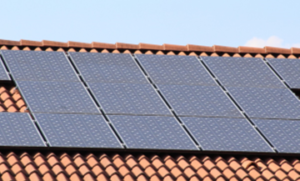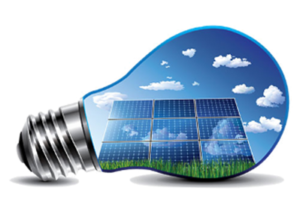 James 1:5 reminds us that God generously gives wisdom to those who ask sincerely and in faith. In our context, this means we strive to plan wisely for an uncertain future with the resources that God gives. We know God guides us toward the right solutions for future problems.
James 1:5 reminds us that God generously gives wisdom to those who ask sincerely and in faith. In our context, this means we strive to plan wisely for an uncertain future with the resources that God gives. We know God guides us toward the right solutions for future problems.
One example was our 2016 Christmas project in which we sought to raise funds for a stable supply of clean water on the property. At the time we were struggling with the local water supply which was never enough and of questionable quality. As such, we appealed to you, our loyal supporters, to give toward some additional boreholes/wells and install a water purification system. As a result, we now have enough clean drinking water coming from every tap at Bethesda.
At the time, we were mainly concerned with water availability, but God was protecting the Bethesda families from a serious threat which only materialised this year. In the last few months, there was an outbreak of Cholera in the Hammanskraal area, and the municipal water supply was identified as the source of this outbreak. By early July, there were over 100 confirmed cases of Cholera and 23 deaths in the Hammanskraal area alone. Thanks to God’s provision, no one at Bethesda was affected.
Over the last several years, and looking forward, it has become clear that our South African electricity supply is incredibly erratic and unstable. To deal with the lack of power, the country’s state-owned and only electricity supplier, Eskom, has implemented a strategy called “load shedding.” Load shedding is a schedule of intentional, rotational power outages in which an area’s electricity supply is switched off for 2 hours at a time and redirected to other areas. Depending on the stage of load shedding being implemented, electricity is out from 1 to 6 times in a 24-hour day, meaning that the power is off for 2 to 12 hours per day. We have apps on our phones which help us plan each day around when the power is on or off.
We are told that load shedding alleviates pressure on the grid so that the grid won’t completely collapse. It’s meant to be an interim arrangement while the government is building more power stations. So – how many power stations are being built, and when will they be completed?
 From 1991 until now, 3 additional coal-fired power stations have been commissioned of which only one was completed. https://www.biznews.com/energy/2021/07/05/load-shedding-sa-history The last 2 of these stations have been in development since 2007 and neither one of them is operational yet. After several issues with design flaws, corruption, and general mismanagement, the last 2 power stations are slated to be completed and operational by 2024/2025. Unfortunately, it is estimated that South Africa’s electricity demand will once again outweigh our generation capacity even with the new plants included.
From 1991 until now, 3 additional coal-fired power stations have been commissioned of which only one was completed. https://www.biznews.com/energy/2021/07/05/load-shedding-sa-history The last 2 of these stations have been in development since 2007 and neither one of them is operational yet. After several issues with design flaws, corruption, and general mismanagement, the last 2 power stations are slated to be completed and operational by 2024/2025. Unfortunately, it is estimated that South Africa’s electricity demand will once again outweigh our generation capacity even with the new plants included.
Many home owners throughout SA have already had to make alternative plans in the form of generators or solar power installations just to carry on normal life. Due to very high levels of corruption that are prevalent within Eskom and the government in general, it seems unlikely that this issue will be resolved soon. https://www.bbc.com/news/world-africa-65671718 The net result for ordinary South Africans is that we cannot escape the slow collapse and must make our own plan to have a stable power supply. We must weigh our options and look for a solution that would best suit Bethesda’s needs.
Two options:
- Generator: We could possibly install a generator that could produce enough electricity to power Bethesda if needed, but due to the cost of diesel and other fuels, generating the required amount of electricity this way could cost more than 4 times more than we currently pay to the state-owned electricity supplier per month (We currently pay over R50,000 / month and more during winter).
- Solar: Alternatively, we could consider a solar power solution, which would stabilize our power supply and significantly reduce our monthly energy cost. The downside is that it requires a massive initial capital investment. Thankfully, God has blessed South Africa with loads of sunshine, so it’s one of the places where solar energy makes the most sense. On average, Pretoria has around 3 220 sunshine hours, or more than 330 sunshine days per year, making it an ideal area for solar energy

Because of the politicization of renewable energy, it has become quite difficult to have this kind of a discussion as there are so many differing opinions. I believe it’s something that must be seen in its own local context.; meaning, what could possibly work in Europe or the United States, may not necessarily work in South Africa and vice versa.
What is the Way Forward for Bethesda?
In the interest of finding a way ahead for Bethesda, we have considered several options, but it seems that the best solution may be to install a site-wide solar power setup. The best costing we’ve been able to get so far comes in at +- R3.5million (+/-$200K at current exchange rate). It’s our hope to  raise as much of that as possible to start the process. According to our projections, we would then be able to use the funds we currently pay to Eskom monthly, to finance the balance of this system. This would give us uninterrupted power at the same price we’re currently paying without being dependent on Eskom.
raise as much of that as possible to start the process. According to our projections, we would then be able to use the funds we currently pay to Eskom monthly, to finance the balance of this system. This would give us uninterrupted power at the same price we’re currently paying without being dependent on Eskom.
Once the system is paid off, we would invest whatever savings we continue to have, to replace the equipment over time as needed, considering that this equipment does not last forever.
Overall, it appears to be the best solution for us at this time and in time to come. We’re praying that God blesses our planning in this endeavour and that He uses this to His glory as Bethesda and South Africa in general heads into an uncertain future.
FAQ’s
- Why not use LNG Generator? Unfortunately, we don’t have access to LNG powered generators such as the ones readily available in the US, and even if we did the cost of liquid natural gas, or propane is not as low as it would be in the States.
- Is Natural Gas even available? While we may very well have natural gas resources available in South Africa, it’s not something that the country has the infrastructure to utilise optimally the way the US does.
- Is Nuclear power an option for SA? There is a nuclear power plant currently in operation but it is at the end of its operational life. (https://mg.co.za/environment/2023-03-23-20-years-to-be-added-to-koebergs-life/) It may be a good option, but again it would have to brought about by the same government that has taken more than 18 years to build 2 coal fired power stations, so it’s unlikely to happen again safely in the next 2 decades.
- Is Bethesda going green? Bringing a stable and affordable electrical supply is our primary motivation for this project. We agree that we should be good stewards of God’s resources but bringing God glory through the use of resources is a higher priority than the current political green
 initiatives.
initiatives. - When did loadshedding first start? How long has this been a problem? This strategy was implemented for the first time in 2007 when Eskom realised that it did not have enough power generation capacity to deal with country’s demand for electricity. https://www.thesouthafrican.com/news/offbeat/when-did-load-shedding-start-south-africa-what-year-eskom/ . From that time until 2019, load shedding occurred sporadically in South Africa, but from 2020 onwards, it started becoming far more prevalent. https://www.thesouthafrican.com/news/load-shedding-tracker-how-many-days-2015-2023-outlier-visuals-breaking-11-january/
- How much loadshedding have we experienced in the last few years? From 1 January 2022, up to today (24 July 2023), South Africa has experienced 412 days in which load shedding was active. That amounts to a total of 2 352 hours of darkness over the last 19 months. If those hours occurred concurrently, we would have experienced 98 (24-hour) days of no power. That’s more than 3 months of the last 19 months during which the country had no electricity! https://businesstech.co.za/news/energy/706368/south-africa-just-hit-a-dark-load-shedding-milestone/
- When will loadshedding end? According to the SA Council for Scientific and Industrial Research (CSIR), even if the country managed to generate enough electricity, the transmission grid would have to be upgraded significantly to handle the additional power. Clearly this problem is not going away any time soon. https://mybroadband.co.za/news/energy/501354-south-africa-will-have-power-cuts-for-another-ten-years-warns-expert.html

